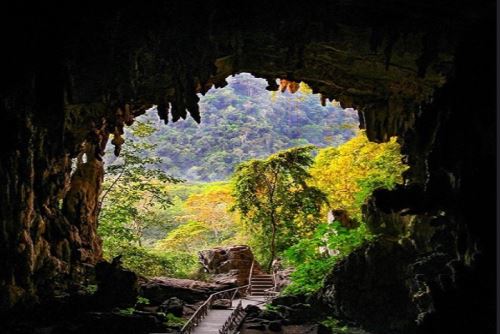Peru shines again on the international stage. Huascaran National Park, Lachay National Reserve, Tingo Maria National Park, and Mar Tropical de Grau National Reserve were recognized in France among the 100 most inspiring stories of sustainable tourism in the world, at the global
, which brought together over 200 delegations.
Likewise, it consolidates its regional leadership in nature tourism with a sustainable focus.
"This recognition is not only for our protected natural areas, but also for the people who live around them and care for them every day. That is why we say that conservation is for the people and by the people," Sernanp Executive President Carlos Nieto stated.
"Our challenge is for every visitor to find in these destinations not only natural beauty, but also communities that thrive sustainably thanks to responsible tourism," he added.
Thanks to this recognition, Peru reaffirms that its protected natural areas are more than landscapes. They are solutions to climate change, drivers of social inclusion, and platforms for sustainable development for local communities.
The mountain range that educates about climate change
The story of Huascaran National Park (Ancash region), titled "The Cordillera Blanca (White Mountain Range) That Fights Climate Change," won over the jury with its Pastoruri–Climate Change Route –a pioneering tourist trail in Latin America.
Interpretive panels, sensitized tour operators, and committed communities have turned glacial retreat into a living lesson for more than 50,000 visitors every year.
In 2024 alone, the strategy reduced waste per visitor by 22% and demonstrated that conservation can also be measured in numbers.
Tourism for all the senses
Lachay National Reserve (Huaura, Lima region) was awarded for its pilot project on accessible tourism for people with visual impairments.
It was developed in collaboration with the Ministry of Foreign Trade and Tourism (Mincetur) and the Lima Center for the Rehabilitation of the Blind (Cercil).
With sensory tours combining the scents of native plants, birdsong, and tactile modules, it achieved 100% visitor satisfaction and marked a milestone in social inclusion within protected natural areas.
The forest that sustains life
The Tingo Maria National Park (Huanuco region), known as the home of "The Sleeping Beauty" and "The Owl Cave," was recognized for its model of ecosystem services conservation.
Its 4,777 hectares provide clean water for more than 1,500 families and help regulate the city's temperature.
Additionally, it promotes bio-entrepreneurships such as native bee beekeeping and agrotourism, which directly benefit 10 local families today.
